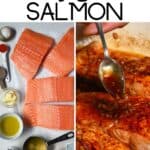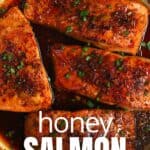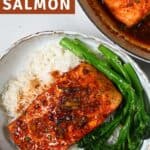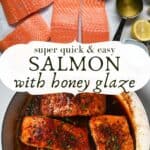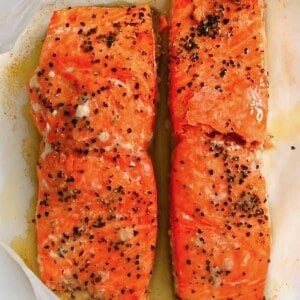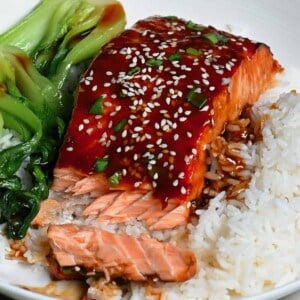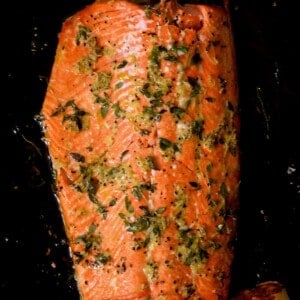This post may contain affiliate links. Please read our disclosure policy.
This one-pan, restaurant-quality honey glazed salmon yields perfectly tender, flaky salmon fillets smothered in a sticky, sweet-savory glaze and is ready in under 30 minutes!
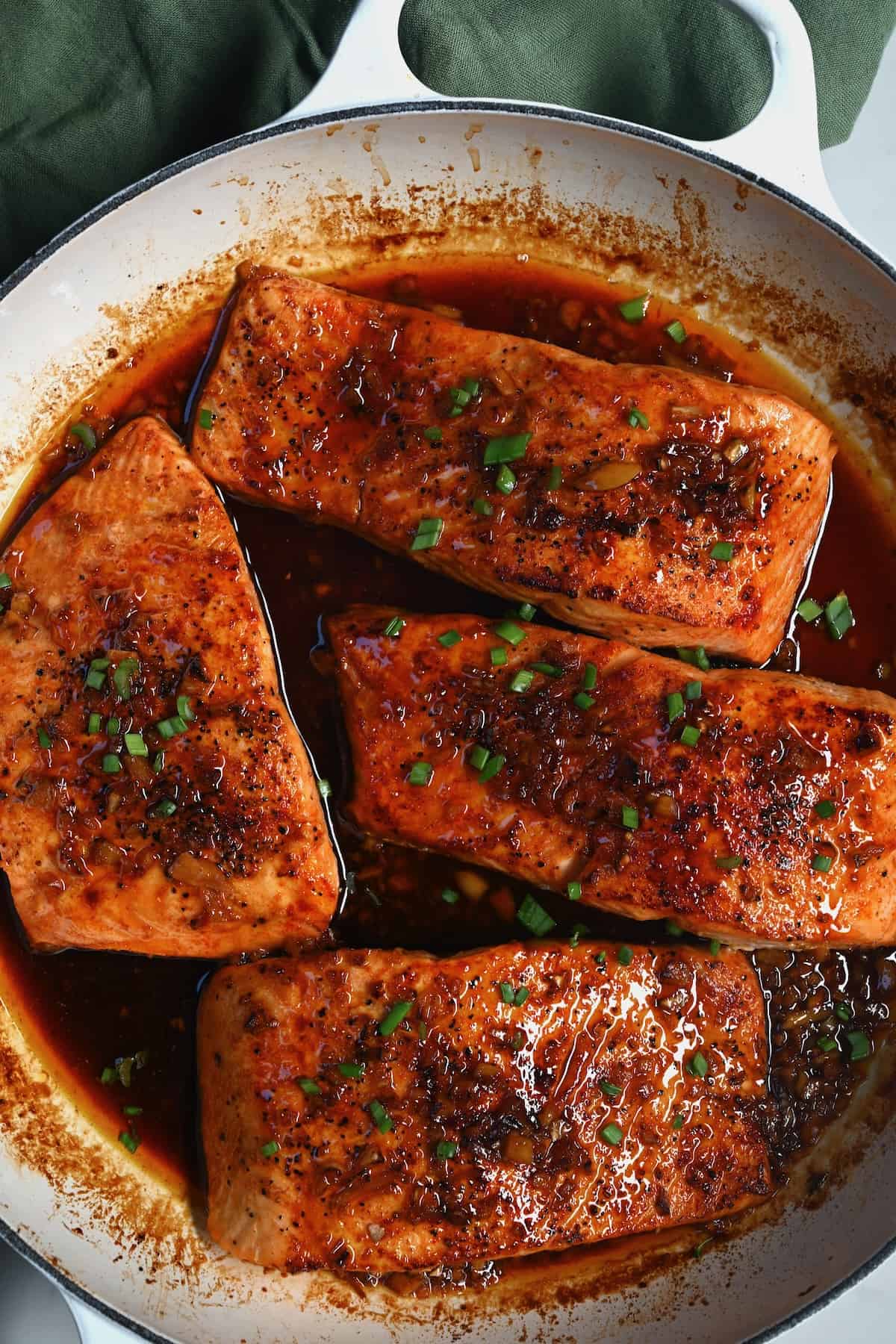
Quick salmon recipes have become a weeknight favorite in my house. This honey-glazed salmon is a juicy, flaky, and super satisfying dish that is perfect for combining with carbs and veggies. Everyone will love the delicious combination of sweet, acidic, aromatic, spicy, and salty flavors.
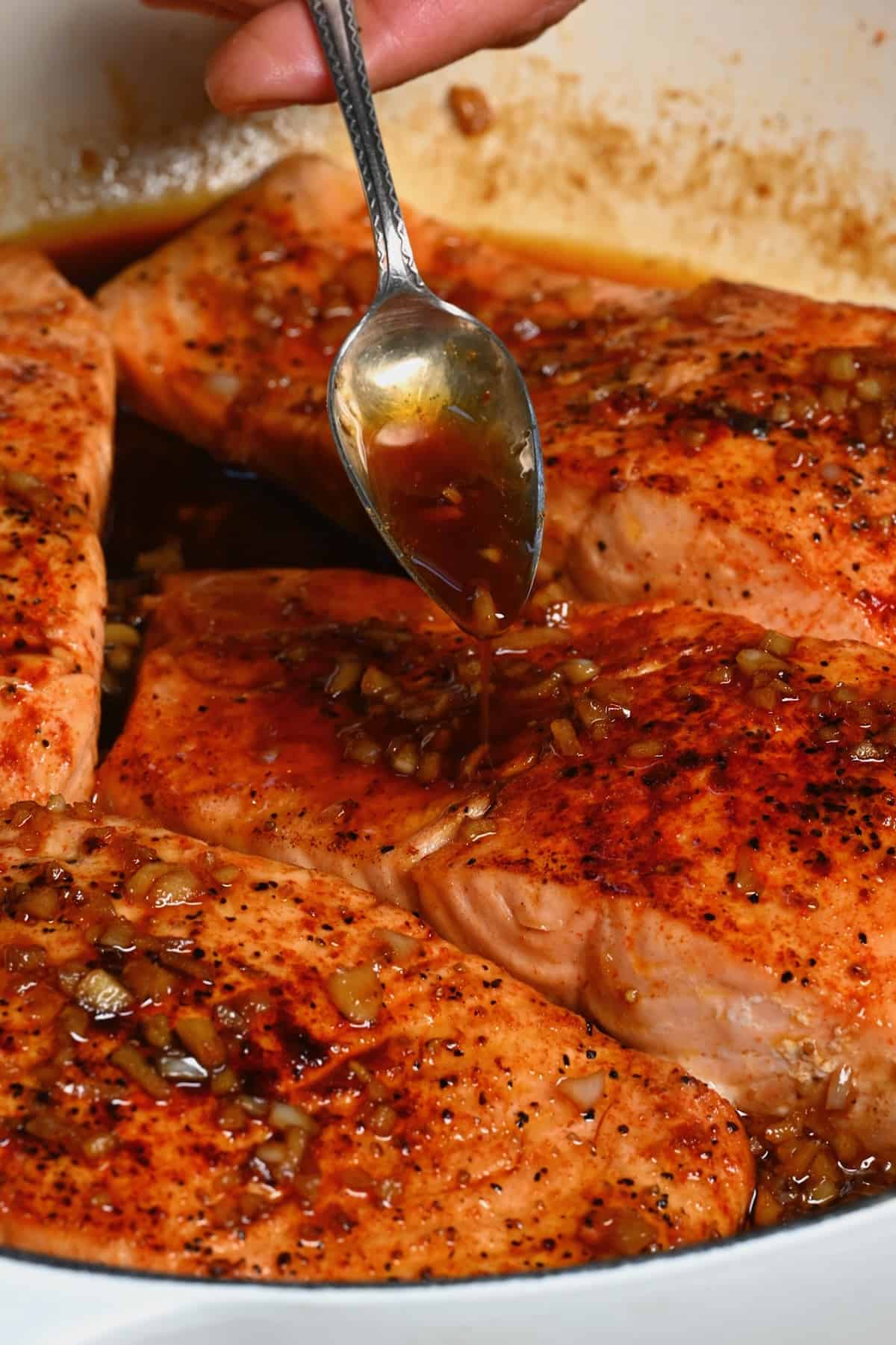
Table of contents
Watch the easy tutorial
Ingredients
With a fairly short ingredients list (pantry-friendly!), you’ll be shocked at how flavorful this recipe is!
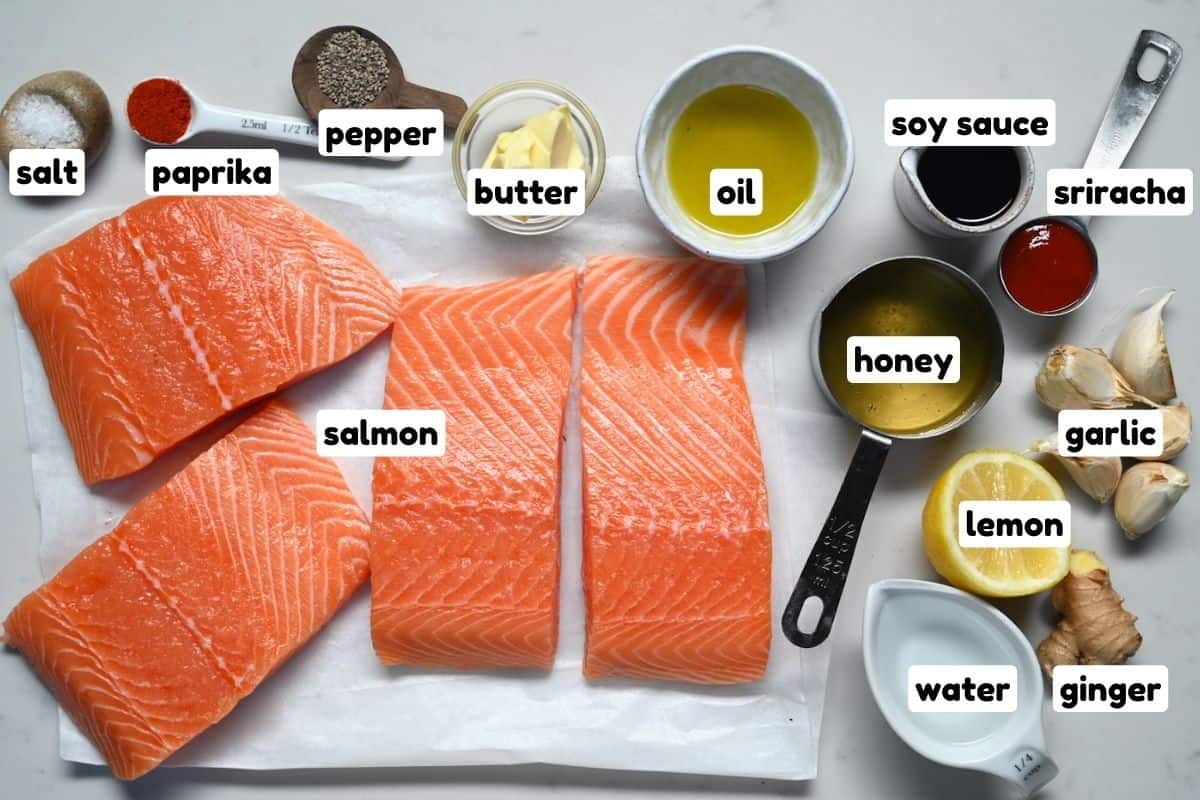
- Salmon fillets: I recommend using wild fresh salmon filets (like wild sockeye, coho, or king salmon), skin-on, and bones removed, all a similar size between 6-8oz. You can use frozen (thawed) salmon, too.
- Olive oil and butter: Using a combination of both helps to produce rich and buttery fish packed with flavor.
- Aromatics: I love using fresh minced garlic cloves and ginger in this glaze, though the latter is optional. Use powdered garlic or ginger in a pinch.
- Honey: It makes the sticky sweet base.
- Soy sauce: For a salty, umami-rich flavor. It’s best to use light soy sauce (reduced sodium if preferred).
- Seasoning: smoked paprika, sea salt, and black pepper.
- Lemon juice: Or lime juice/rice wine vinegar. Add the zest for extra bold citrus.
- Sriracha: Or other hot sauce. Adjust the amount or omit if preferred. A pinch of red pepper flakes would also work.
- Water: To bring the sauce to the correct consistency.
Optionally garnish the fish with sliced green onions, sesame seeds, and/or sliced lemons.
How to make honey-glazed salmon
Prepare the Salmon: First, pat the salmon dry with paper towels. Season the fillets with salt, pepper, and paprika.
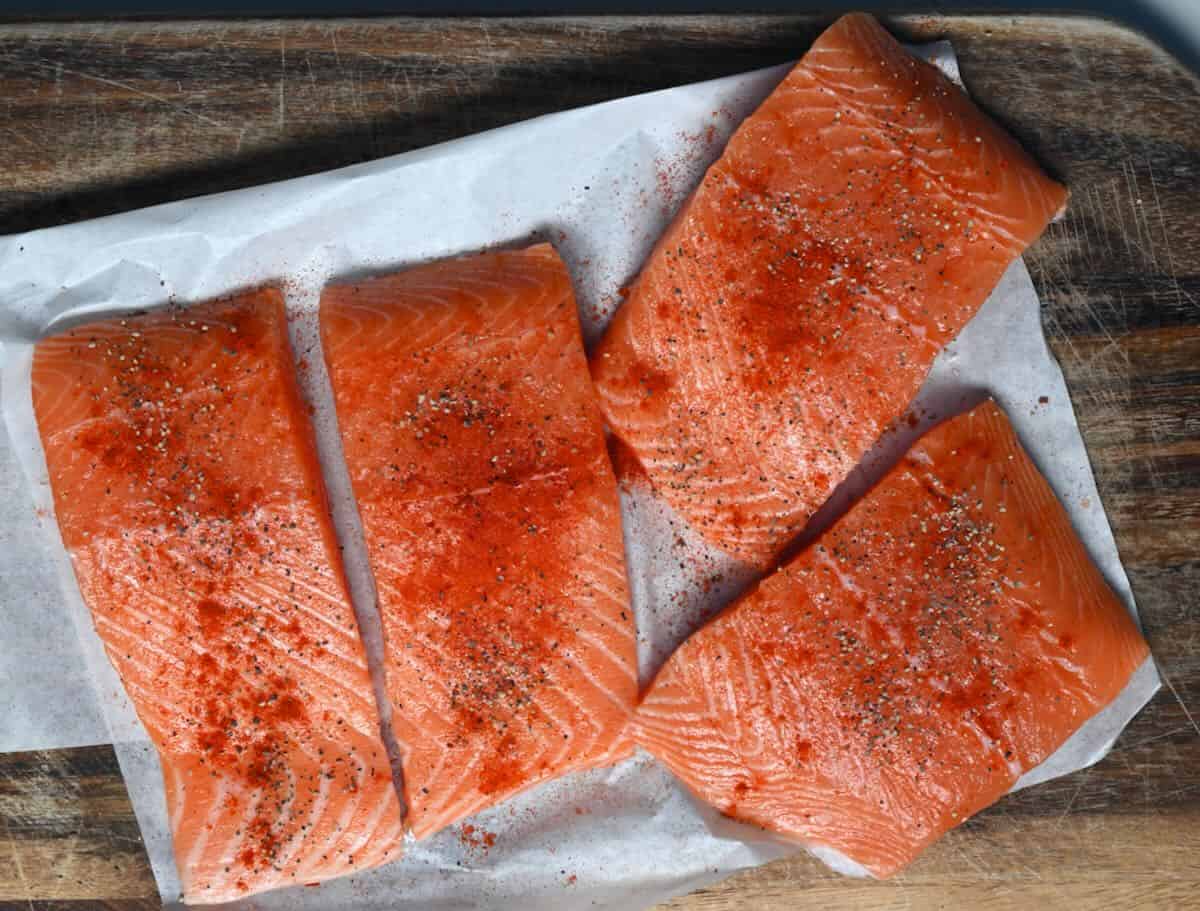
Pan-sear: First, ensure your oven rack is adjusted to the middle position and preheat your broiler to medium-high.
Then add the butter and oil to a large oven-safe skillet and heat it over medium-high heat. Once the butter melts, place the salmon skin-side-down. Pan-sear for 2-3 minutes per side (depending on thickness). When flipping the salmon, it’s best to gently lift one corner first. If it releases easily, it’s ready to flip. Otherwise, keep it in the pan so the salmon cooks for a little longer. Then set aside.
Add the minced or grated fresh ginger and garlic to the pan. Heat them for 10 seconds until they become aromatic. Then, mix in honey, sriracha, lemon juice, soy sauce, and water. Heat for an additional 20 seconds to infuse the flavors before carefully adding the salmon back to the pan.
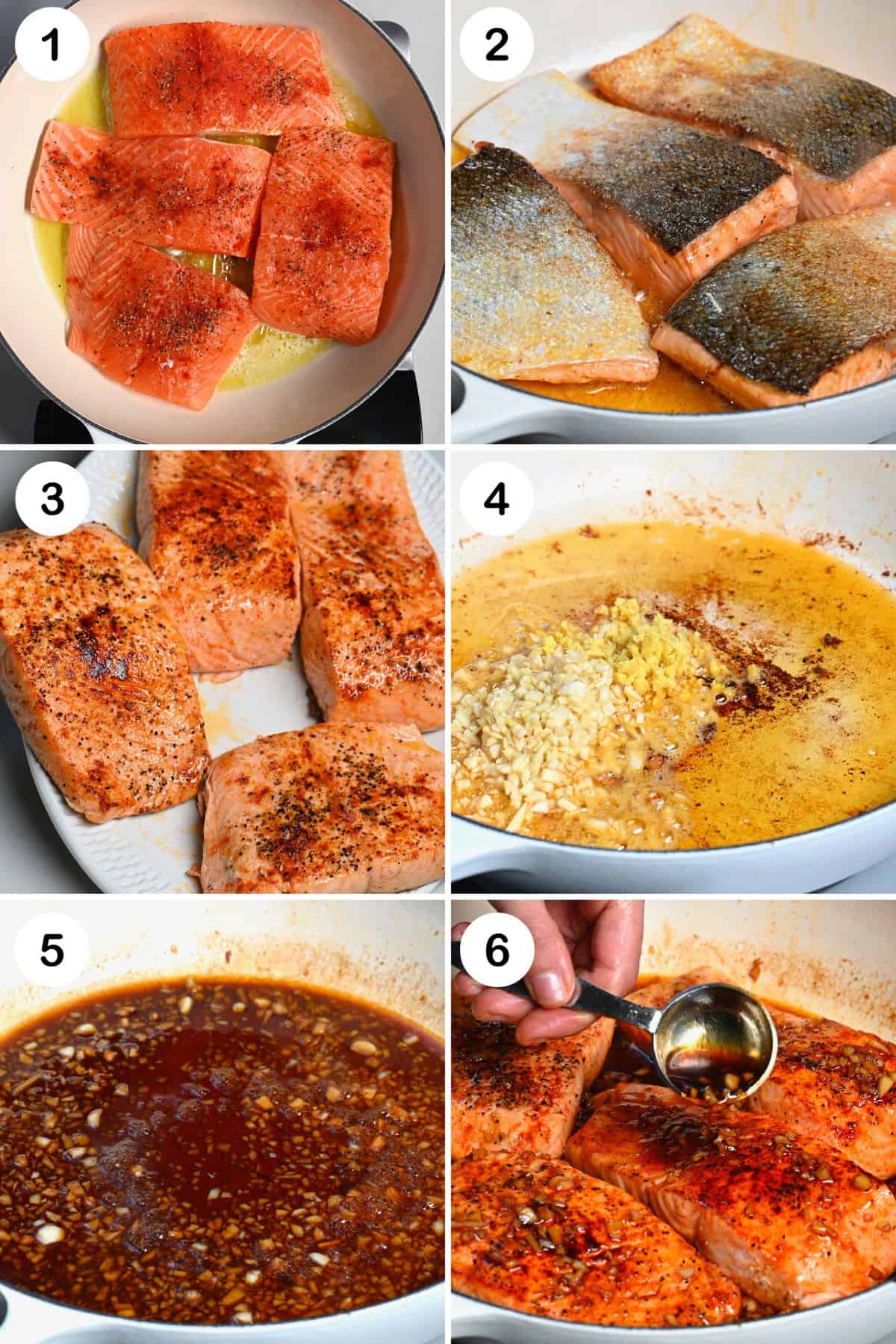
Cook the salmon further for 2-3 minutes and regularly pour the sauce over it to thoroughly glaze it.
Broil: Finally, transfer the pan to the oven and broil for about 5 minutes. Baste the sauce over the salmon often until it caramelizes, develops a sticky sweet glaze, and is lightly charred. Enjoy!
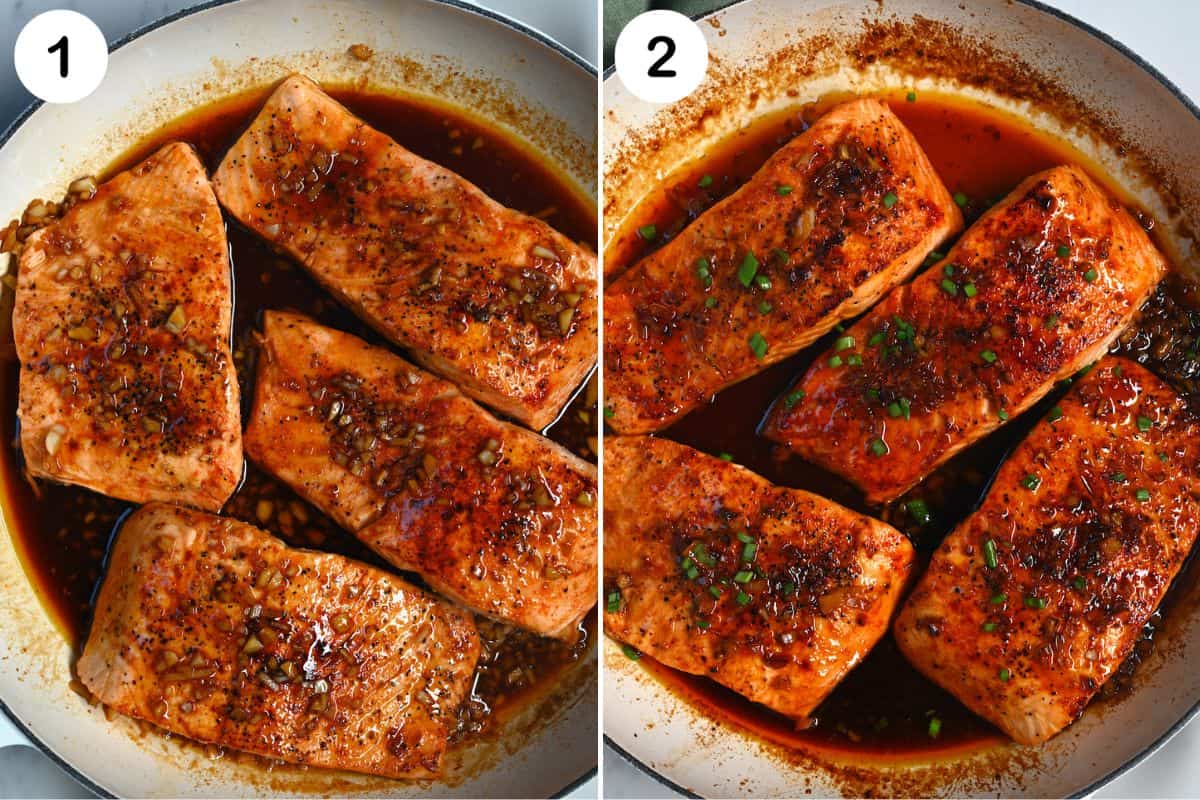
Serving recommendations
Making dishes that taste great with honey garlic salmon is super easy. Just pair it with a side of vegetables and carbs:
- Grains: jasmine rice, or quinoa
- Noodles: Like soba noodles, a noodle salad, or vegetable lo mein.
- Cooked vegetables: Like asparagus, broccoli, green beans, artichoke, bok choy, carrots, etc.
- Potatoes: Roasted, or creamy mashed potatoes.
- Salads: serve alongside your favorite fresh salad.
Feel free to add chilled leftover salmon to dishes like leafy green salads, pasta salads, wraps, tacos, etc.
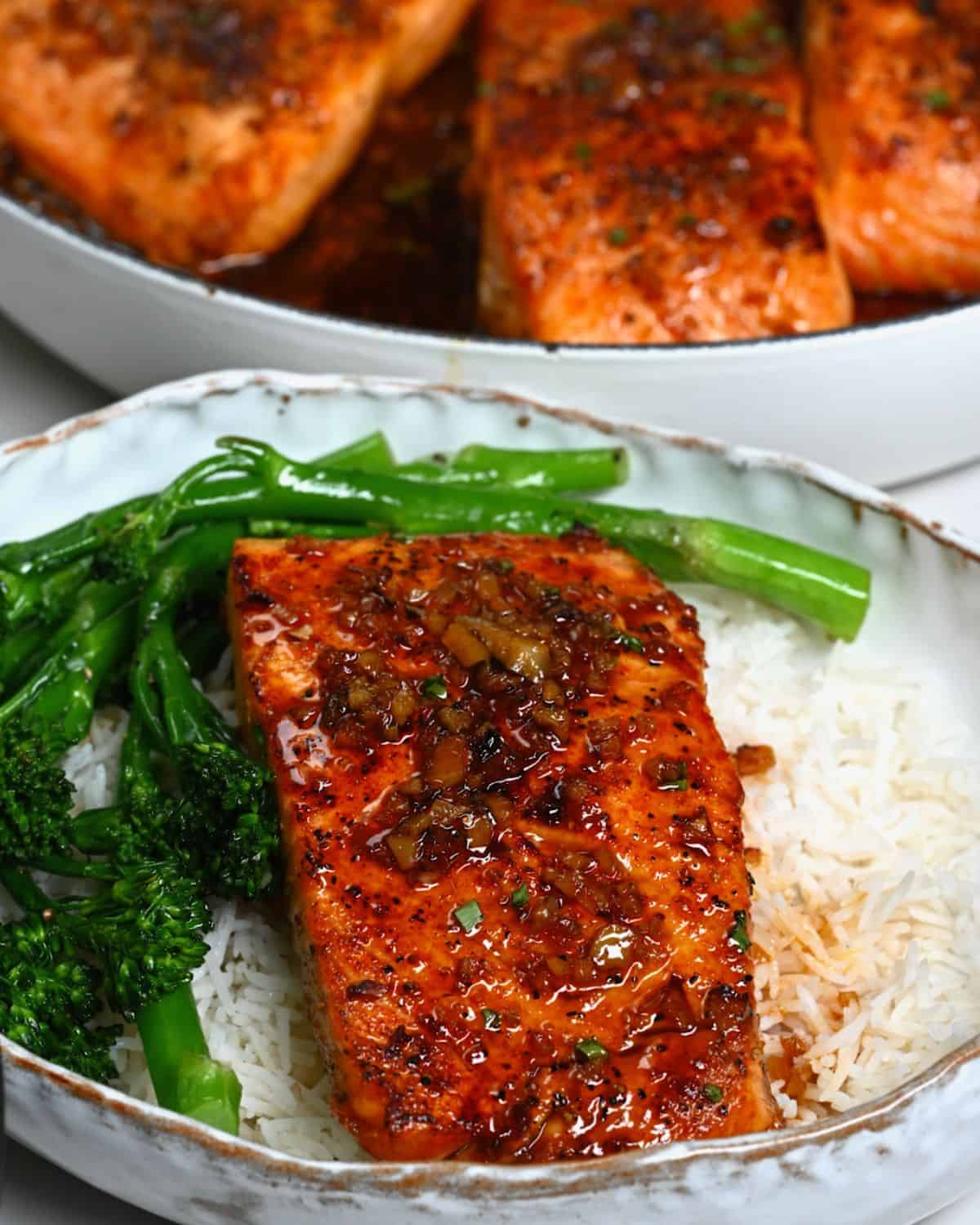
More salmon recipes to try
If you try this easy honey-glazed salmon recipe, let me know how it goes in the comments below. I’d appreciate a recipe card rating and would love to see your recipe recreations – tag me on Instagram @Alphafoodie!
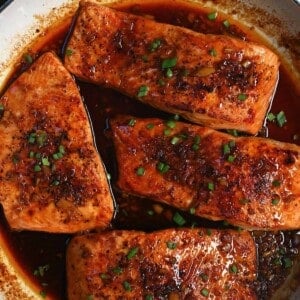
Honey Glazed Salmon Recipe
Ingredients
- 32 oz salmon 4 filets; best to use fresh wild salmon (wild sockeye, coho, or king salmon), skin-on, and bones removed, all a similar size between 6-8 oz; you can use frozen (thawed) salmon
- 1.5 Tbsp olive oil
- 0.7 oz butter 1.5 Tbsp; unsalted
- 1/2 tsp sea salt
- 1/2 tsp black pepper
- 1/2 tsp paprika powder smoked, optional
Honey Glazed Sauce
- 1/2 cup honey
- 1.2 oz garlic 5 large cloves
- 0.28 oz ginger 1/2 Tbsp minced, optional
- 2 Tbsp lemon juice from 1/2 a lemon; OR lime juice
- 3 Tbsp light soy sauce OR coconut aminos/tamari
- 1 Tbsp sriracha sauce or hot sauce, optional
- 1/4 cup water
Instructions
- Pat the salmon dry with paper towels. Season the fillets with salt, pepper, and paprika. Mince/grate the ginger and garlic.
- Ensure your oven rack is adjusted to the middle position and preheat your broiler to medium-high.
- Add the butter and oil to a large oven-safe skillet and heat it over medium-high heat. Once the butter melts, place the salmon skin-side-down and pan-sear for 2-3 minutes per side (depending on thickness), then set aside.When flipping the salmon, it's best to gently lift one corner first. If it releases easily, it's ready to flip. Otherwise, leave it for a little longer.
- Add the minced or grated fresh ginger and garlic to the pan. Heat them for 10 seconds until they become aromatic. Then, mix in honey, sriracha, lemon juice, soy sauce, and water. Heat for an additional 20 seconds to infuse the flavors before carefully adding the salmon back to the pan.
- Cook the salmon further for 2-3 minutes and regularly spoon the sauce over it to thoroughly glaze it.Simmer it for longer if you want the sauce to reduce and thicken slightly into a glaze.
- Transfer the pan to the oven and broil for about 5 minutes, basting the sauce over the salmon often until it caramelizes and is lightly charred. Enjoy!Optionally garnish with sliced green onions, sesame seeds, and/or sliced lemons.
Video
Notes
Nutrition
Nutrition information is automatically calculated, so should only be used as an approximation.

